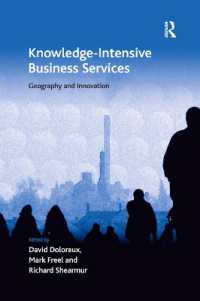- ホーム
- > 洋書
- > 英文書
- > Literary Criticism
Full Description
Hope and future are not the terms with which James Joyce has usually been read, but this book paints a picture of Joyce's fiction in which hope and future assume the primary colours.
Rando explores how Joyce's texts, as early as Dubliners and A Portrait of the Artist as a Young Man, delineate a complex hope that is oriented toward the future with restlessness, dissatisfaction, and invention. He examines how Joyce envisions alternatives to the prevailing conventions of hope throughout his works and, in Ulysses and Finnegans Wake, develops formal techniques of spatializing hope to contemplate it from all sides.
Casting fresh light on the ways in which hope animates key aspects of Joyce's approach to literary content and form, Rando moves beyond the limitations of negative critique and literary historicism to present a Joyce who thinks agilely about the future, politics, and possibility.
Contents
Preface
Introduction: Hope and Form in Joyce
Chapter One: Without Paralysis: Hope, Hunger, and Spiritual Liberation in Dubliners
Chapter Two: The Future of Joyce's A Portrait of the Artist as a Young Man: The Künstlerroman
and Hope
Chapter Three: A Humid Nightblue Dot: The Spatialization of Hope in Ulysses
Chapter Four: Daydreams of History and Reincarnation in Finnegans Wake
Bibliography






